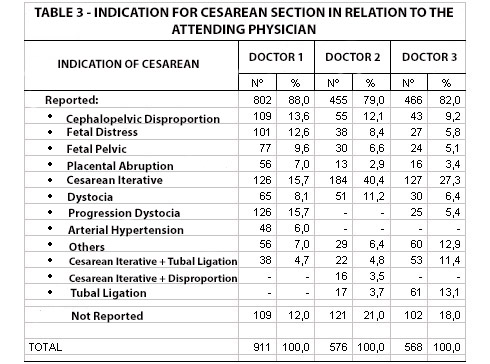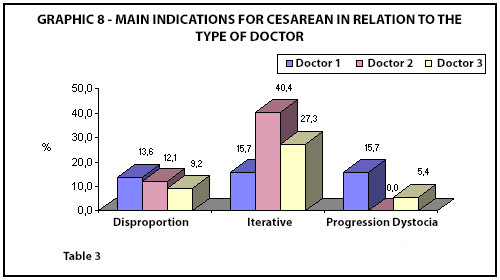Other Data of the Population
Varix – 16%
Edema – 17%
Bad shape teeth – 27%

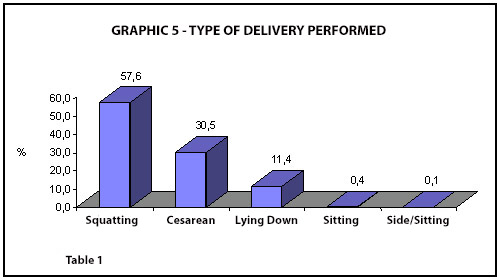
BIRTH:
Squatting position………. 11.105 (57%)
Cesarean section…………...5.874 (30%)
Supine position……………..2.189 (11%)
Forceps…………………………...86 (-x-)
Non specified…………………..214 (1%)
Minimum blood pressure: up to 89 mm Hg – 72%
From 90 mm Hg to 100 mm Hg – 21%
Maximum blood pressure: from 131 mm Hg to 150 mm Hg – 16%
Over 150 mm Hg – 7%
Two observations can be pointed out about the incidence of surgical deliveries. First, the infirmary patients had 15% less incidence of c-section delivery than the private patients. Second and more important, the incidence of type of delivery varies according to the responsible doctor. So studying doctors number 1, number 5, and number 4 the figures are as follows:
|
Doctor 1 / 4.962 del. |
Doctor 5 / 1.810 del. |
Doctor 4 / 1.480 del. |
|
79% squatting position |
47% supine position |
51% squatting position |
|
18% c-section |
32% c-section |
38% c-section |
|
2% supine position |
21% squatting position |
10% supine position |
|
22 forceps |
4 forceps |
3 forceps |

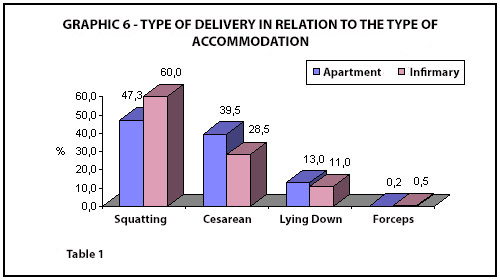

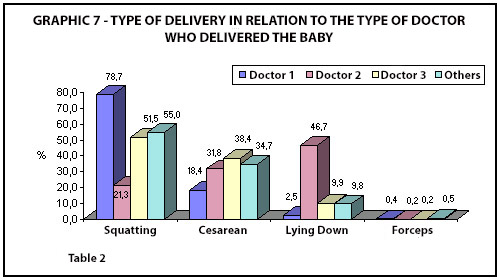
The main indications for doctor 1 were due to failure to progress, second c-section, and cephalo-pelvic disproportion. For doctor 5, second c-section and and cephalo-pelvic disproportion. For doctor 4, second c-section associated with tubal sterilization, and simply tubal sterilization.
We see that surgical delivery rates are closely related to each doctor.
